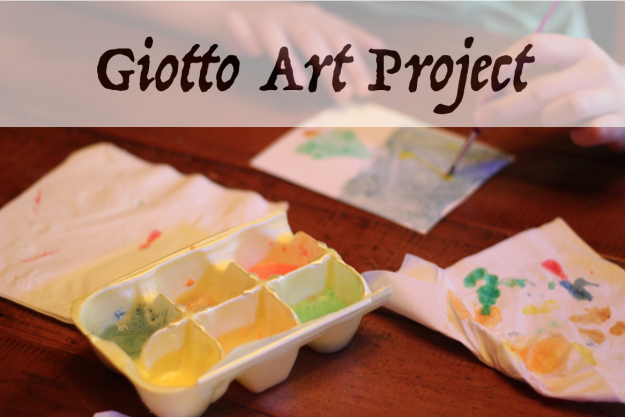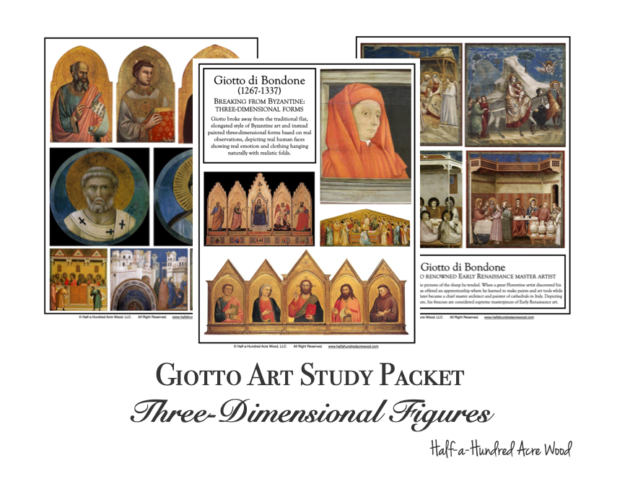Have you ever had an idea not go as planned?
That was me when we tackled painting with homemade egg temperas.
My thought was… “Hey, we have all these leftover boards from the work we’re doing on our ‘Little House in the Holler.’ Why not cut them up into little wooden plaques to paint in the style of Giotto?”
Well, it didn’t work. In fact, we tried out several different surfaces and found watercolor paper resulted in the best paintings.
For the sake of capturing the memory, and in case you’ve never made egg temperas and are for some reason reading this, here’s how we painted a Giotto art project with homemade tempera paints (using the non-fresh, storebought kind of eggs).
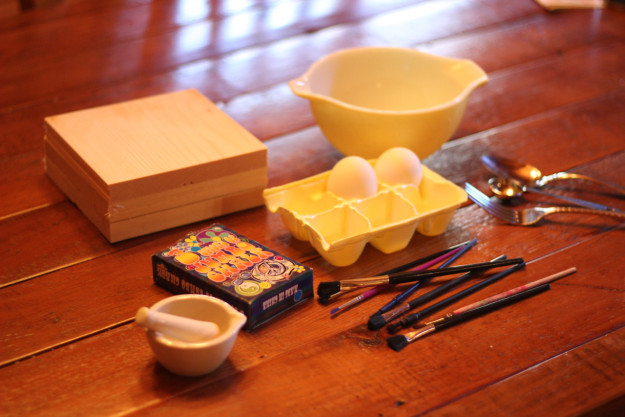
Giotto Art Project Supplies:
- Giotto Picture Study Pages (pictured below) from this Great Artists Picture Study Packet
Wood boardsWatercolor paper- Colored chalk (or dead insects. haha)
- Mortar & pestle (or bowl & rock)
- Small bowl for mixing
- Fork
- Spoon
- Teaspoon
- Paintbrushes
- Egg yolks
And now for the procedure…
First, we studied the Giotto Art Study Pages from the Great Artists Picture Study Packet. (Print out the Giotto Art Study Pages and discuss with your student(s) to incorporate picture study and art appreciation.)
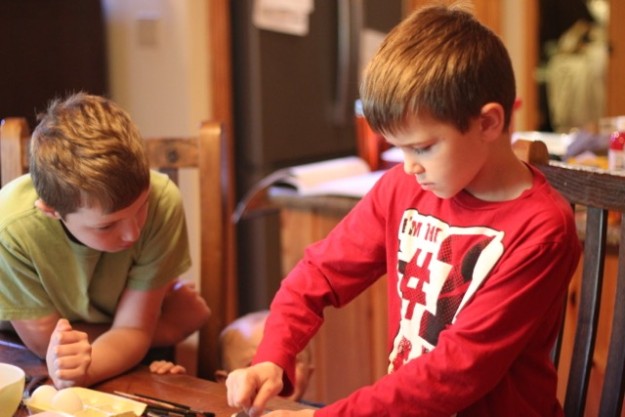
Step 1. Grind the chalk using the mortar and pestle (or bowl and rock).
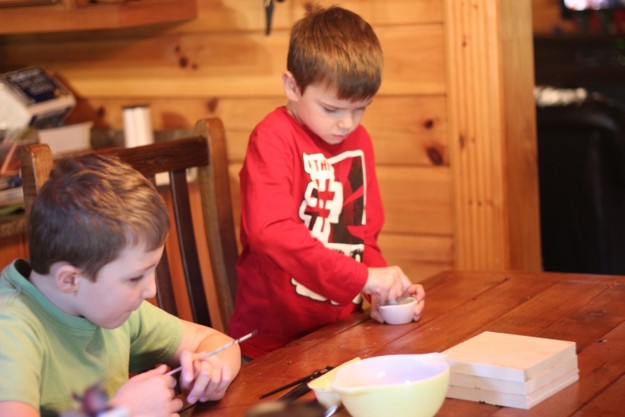
Step 2. Into small mixing bowl, mix egg yolk and 2 tsp of water, and beat with fork until frothy. (2 tsp of water per egg yolk)
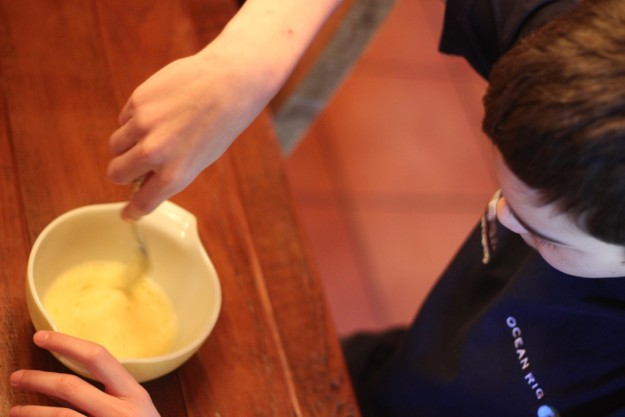
Step 3. Place powdered chalk in egg carton and add a few spoonfuls of watery egg yolk.
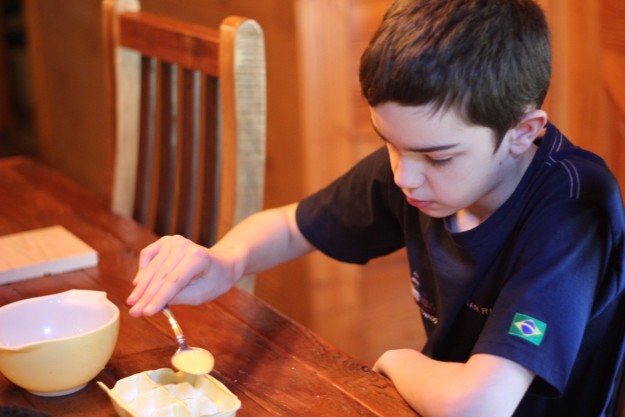
Step 4. Stir chalk and egg to make egg tempera paint.

After we made paints with the chalk colors we had, we started experimenting with color mixing to make colors we needed. This chart became pretty handy…
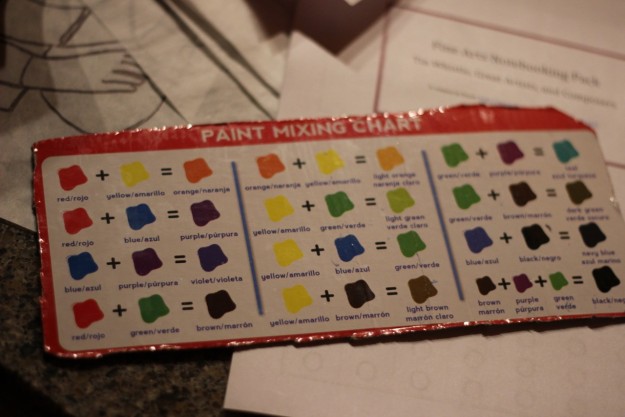
Step 5. Paint!
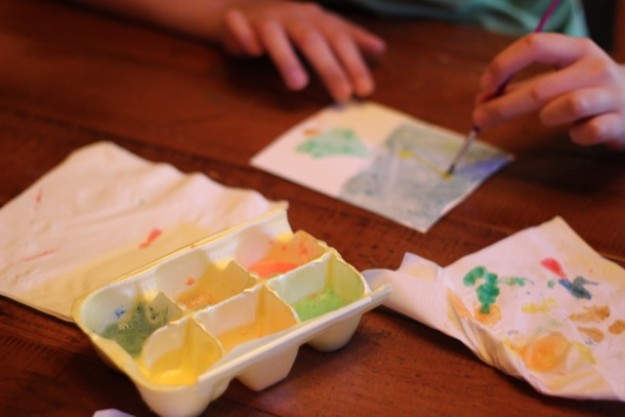
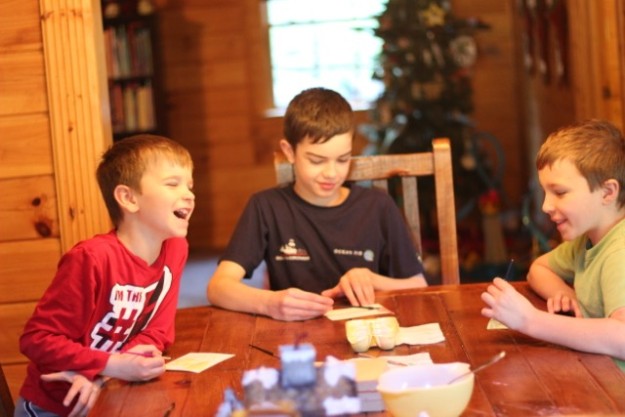
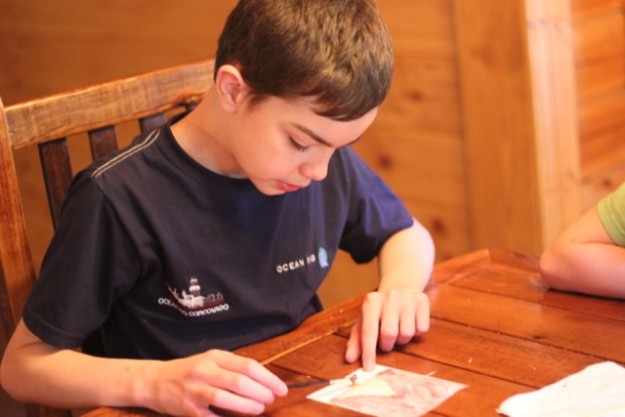
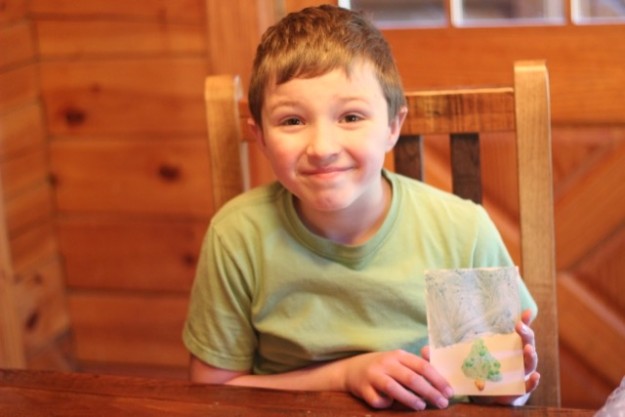
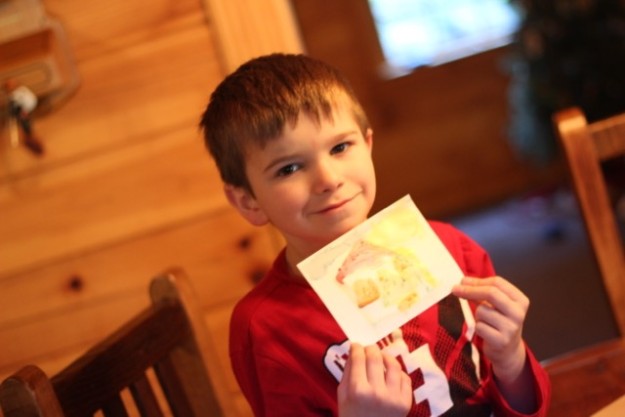
Christmas in the style of Giotto:
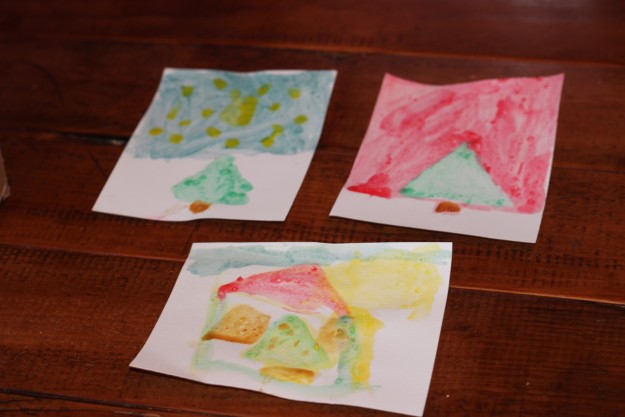
A few thoughts and lessons learned
Out of all the surfaces we tested, the watercolor paper (pictured bottom left in the photo below) turned out the best. Postcard paper (pictured above) worked fairly well, but the paper warped a bit as it dried. With wood (pine blocks and balsa), the wood grain showed through the paint (worse than what the photo below shows). Pictured below, computer paper (top) and sketch paper (right) crinkled and warped as it dried. I also tried cardstock (not pictured) but still preferred the results with the heftier watercolor paper.
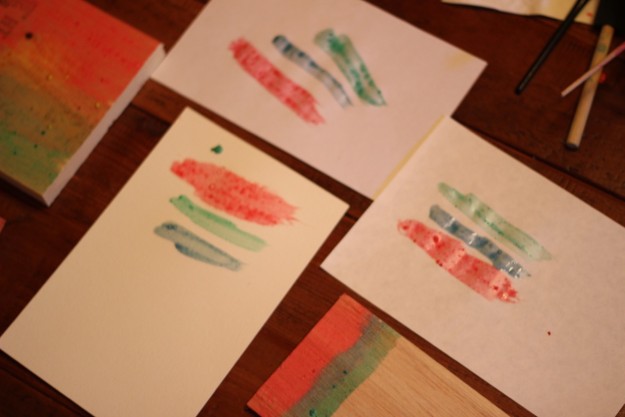
For children to experience the grinding of chalk in a classroom setting, I plan to have some chalk in a mortar & pestle to pass around. Then for each class, we’ll have a carton filled with pre-ground powdered chalk to which we can add the watery egg.
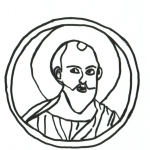 When we revisit this project in January, I’d like for our children to imitate one of Giotto’s paintings. After looking through several of Giotto’s works, I decided to make outline drawings of St. Peter and St. Paul, which are two of his simplest. You can download them on our Great Artists Coloring Pages post. Another option is to search for simple nativity or Easter coloring sheets on the web. I’ll reference some that we found in our upcoming Angelico Art Project post.
When we revisit this project in January, I’d like for our children to imitate one of Giotto’s paintings. After looking through several of Giotto’s works, I decided to make outline drawings of St. Peter and St. Paul, which are two of his simplest. You can download them on our Great Artists Coloring Pages post. Another option is to search for simple nativity or Easter coloring sheets on the web. I’ll reference some that we found in our upcoming Angelico Art Project post.
If you have other ideas you’d like to share (like tackling homemade tempera-paint-making for those with egg allergies), feel free to leave a comment!
For our other art project posts visit…
Ghiberti Art Project
Angelico Art Project
Durer Art Project
Michelangelo Art Project
El Greco Art Project
Other related posts:
Great Artist Coloring Pages
Fine Arts Notebooking Pages
Great Artists Study

